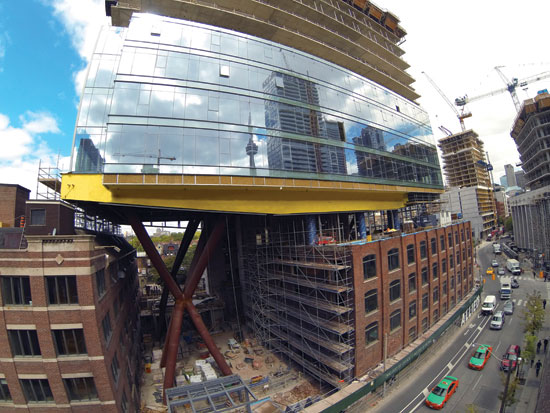Structural Steel Cast Connections
Learning Objectives:
- Investigate the design potential and innovative opportunities that steel castings can contribute to architecturally exposed structural steel (AESS) applications.
- Identify and recognize the various steps involved in the casting manufacturing process including industrial design, detailing, tooling, casting, and machining, and to understand and accommodate the lead times associated with custom castings.
- Differentiate between the various common types of cast steel connections and their appropriate uses in different settings.
- Assess through case studies how steel castings have been used in structural design to maximize architectural benefits, simplify fabrication, and speed erection.
Credits:
Structural steel has been a material of choice for a wide variety of building projects for over 100 years due to its comparatively light weight and excellent structural capabilities. The industry surrounding the production of structural steel sections and the fabrication and erection of steel buildings has evolved in this time and created a fairly sophisticated and easily accessed network of companies, organizations, and individuals. Architects have embraced the benefits of this material and its industry since it allows a certain amount of design flexibility and freedom while often helping construction budgets. This has led to an increasing trend in building design to use structural steel as an exposed design element. Such a design approach requires special attention to make the steel look acceptable not only along the body of the exposed members, but particularly at the connection points. Those connections can often be characterized by an array of bolts, stiffener plates, welds, and other structurally necessary elements which produces an aesthetic that, if left unspecified, is more utilitarian than artistic. Happily, that is no longer the case when the decision is made to use cast steel components. Standardized or custom cast connectors are readily available which provide dramatic geometric freedom in structural steel shapes, thereby enabling artistic designs to be realized.
The Metal Casting Process
Casting molten metal into a form is a common process that has been used historically for many metals including bronze, copper, and steel. In fact, all structural steel starts its life being cast into an ingot or other industrial shape. That steel is then hot rolled or cold formed into the final shape of the structural steel members we are more familiar with such as wide flange sections, angles, channels, hollow structural sections, etc. This rolling/forming process works well for continuous or linear shapes, but not for other, non-linear, custom shapes. Hence, the creation of such specialty steel components relies on using a mold to pour molten metal into thus forming the desired shape without rolling or forming.

Photo courtesy of CAST CONNEX
Architecturally exposed structural steel used on buildings of all types can now also be true design statements due to the availability of cast steel connectors in the U.S. and Canada.









